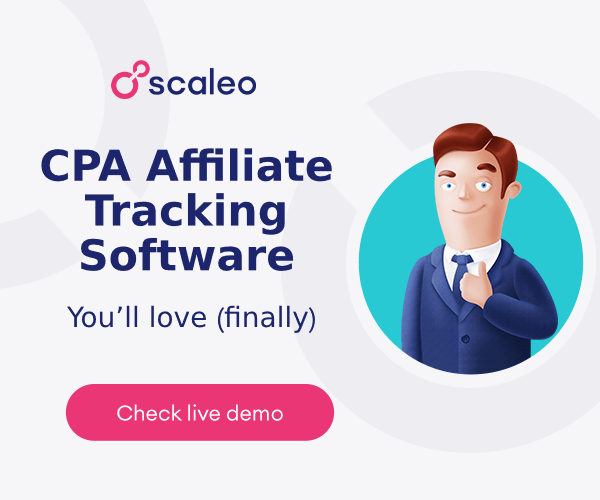How to build affiliate campaigns in 2022? The digital advertising market has changed dramatically in recent years, expanding the scope of modern advertisers. Goals may have revolved around getting as many clicks as possible in the past.
Table of contents
Now, it’s about making ads more personalized and relevant, bypassing ad blockers with trusted content, and accurately measuring your advertising efforts.
As Google has declared that third-party cookies will be phased out in 2023, new opportunities and technologies are emerging that prepare advertisers for a cookie-free future.

Advertisers must master the basics needed to ensure their digital campaigns are successful, but measurement and attribution continue to be major obstacles for many.
There is often a disconnect between what marketers monitor and the indicators that deliver business value. In addition, the data used to test these criteria are often retrospective and not up-to-date, making it difficult to provide an accurate picture of advertising performance.
So how should companies measure the effectiveness of their advertising campaigns, especially when the cookieless future is likely to change everything?
Measure against your company’s goals.
It seems like an easy mistake to avoid, but many marketers continue to fail to align their media analytics with the larger business goals they need to achieve. Let’s take a look at a media example.
When broadcast media was the primary medium for reaching audiences, media effectiveness was measured by “quantifiable” indicators such as reach and frequency. Then, around 1995, there was a surge in digital advertising, and search engine marketing became more popular.

The click was the most commonly used statistic to measure user interaction for pay-per-click (PPC) advertising (also known as click-through rate or CTR).
It’s easy to make a conceptual connection between “engaged customers” and a high CTR, but digital advertising has evolved since the 1990s, and while ad formats and media channels are more diverse today than ever before, click-through rates are still commonly used to evaluate the effectiveness of digital advertising.
However, the simple truth is that CTRs do not tell the whole story. A high CTR may show how engaging your ads are, but it says nothing about whether a user bought your products.
So if a business goal of your company is to increase sales, depending on clicks means you are missing out on important opportunities to reach new markets, make more money, and save money on ad spending.
Proper measurement will become increasingly important in the future without cookies. As online consumer behavior evolves, marketers and digital professionals must develop better ways to measure their media spending and explicitly link the return on investment (ROI) of media spending to their brand’s business objectives. This process starts with first-party data.
Use first-party data to calculate the appropriate metrics.
As third-party cookies quickly become obsolete, first-party data now has the upper hand. If you have a strategy that relies solely on first-party data and examines consumer behavior directly on your site, or if you work with a technology provider that gives you this capability, you can accurately assess key indicators such as the following:

Total website traffic: the number of unique visitors to your website from various sources, such as social media, sponsored search, organic search, and more. Measuring total website traffic on a regular basis will show you whether or not your marketing initiatives are collectively driving more users to your website.
Customer Lifetime Value (LTV): the total value of a customer to your business over the course of their relationship with you. Since it costs less to retain existing customers than it does to acquire new ones, measuring LTV on a regular basis helps you understand whether your campaigns are increasing the value of your existing customers and creating growth for your business.
LTV differs from Net Promoter Ratings (NPS) and Customer Satisfaction Scores (CSAT) in that it is directly related to revenue, not the nebulous promise of loyalty and satisfaction.
Cost per acquisition (CPA): calculate how much it costs to get a potential customer to take an action that leads to a conversion in your campaigns, such as signing up for an event, requesting a demo, or becoming a lead.
CPAs are a financial metric that allows you to easily compare performance across channels and quantify the impact of your campaigns on revenue.

Here is how to make sure you are ready to measure with first-party data
Data is only as valuable as how it is interpreted and used. That’s why it’s critical for any company that wants to succeed in marketing in the future to find partners who can help them leverage their own first-party data for a variety of advertising purposes, including segmentation, delivery, and measurement.
The next step is to determine if business outcomes can be digitally quantified (e.g., increased ad spend ROI or growth among high-spending customers). Once campaign goals are established, metrics should be developed upfront to optimize marketing campaigns to deliver tangible results.
Conclusion
When you launch your campaigns, use the same first-party data you used to develop campaigns across all channels – i.e., digital media channels such as social media, programmatic ads, and online video. By activating your campaigns with real first-party data, rather than stale third-party data, you enable highly personalized and accurate advertising today and in the future.
We should expect an industry-wide shift in the way digital marketing campaigns are monitored and quantified as more companies gain a foothold in the cook-free future. Only then can we expect to see the discrepancy between media and measurement narrow.
Last Updated on November 28, 2023







